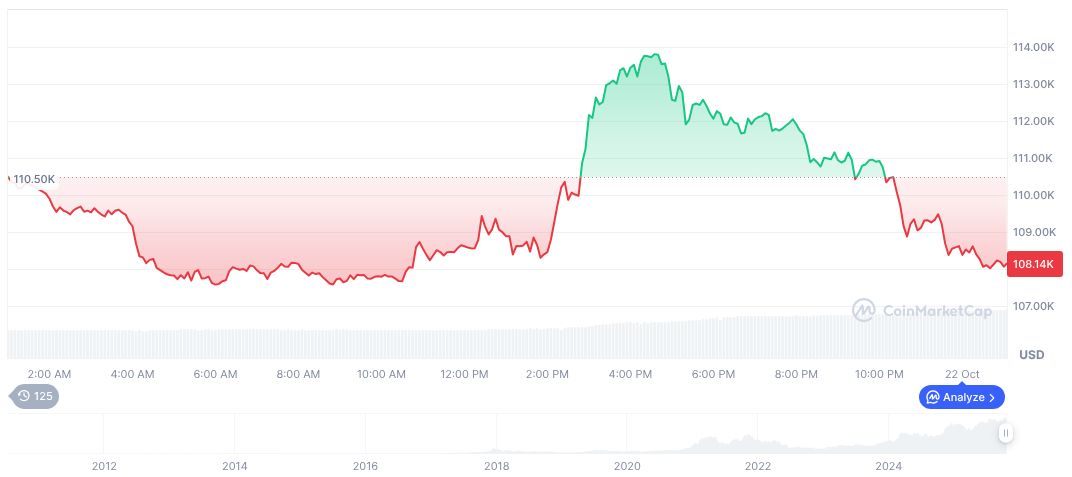- U.S. federal government debt exceeds $38 trillion, spurring economic debate.
- Debt surpassed $37 trillion only two months prior.
- Figures like Michael A. Peterson express concerns over rapid debt increase.
The U.S. Treasury Department reported on October 22 that the U.S. federal government debt surpassed $38 trillion for the first time, reaching this milestone on October 21.
This debt escalation reflects the rapid fiscal expansion and raises concerns about sustainable economic policies affecting broader financial markets.
U.S. Debt Soars: Fiscal Challenges Ahead
The recent rise in U.S. federal debt marks a historical first, with figures from the U.S. Treasury Department indicating a substantial increase over a short timeframe. This financial uptick follows previous incremental increases, highlighting a pattern of fiscal challenges for the nation. Michael A. Peterson, CEO of the Peter G. Peterson Foundation, emphasized the rapid acceleration in debt accumulation, stating:
The acceleration in debt levels has sparked increased scrutiny over financial sustainability, prompting discussions about potential economic ramifications. Experts highlight that this trend necessitates a re-evaluation of fiscal strategies to restore the balance between spending and revenue.
“If it seems like we are adding debt faster than ever, that’s because we are. We passed $37 trillion just two months ago, and the pace we’re on is twice as fast as the rate of growth since 2000.” — Michael A. Peterson
Prominent voices in fiscal policy, including Michael A. Peterson and Maya MacGuineas, President of the Committee for a Responsible Federal Budget, have publicly criticized the situation. MacGuineas mentioned the growing complacency around fiscal dysfunction, pointing to the disregard for budgetary safeguards. Observations from these leaders bring to light the immediate reactions from the finance community, questioning long-term economic resilience.
Historical Debt Patterns and Crypto Market Impacts
Did you know? In the wake of World War II, U.S. federal debt levels also increased rapidly, necessitating significant fiscal reforms to stabilize the economy. This historical context reflects longstanding patterns of governmental financial strategy in crises.
Bitcoin prices have recently experienced a notable downward shift. As of October 22, 2025, Bitcoin’s price stood at $107,752.71, witnessing a 1.37% dip over 24 hours, as reported by CoinMarketCap. Its market dominance remains high at 59.38%, but a series of declines over the past 90 days, totaling an 8.91% drop, signals potential investor hesitation.
Insights from the Coincu research team suggest that ongoing fiscal policies may influence broader market volatilities. They argue that government financial decisions can indirectly impact crypto markets through economic sentiment changes. Historical data indicates these external pressures could affect financial instruments, requiring vigilant market analysis.
| DISCLAIMER: The information on this website is provided as general market commentary and does not constitute investment advice. We encourage you to do your own research before investing. |
Source: https://coincu.com/analysis/us-federal-debt-surpasses-38-trillion/
